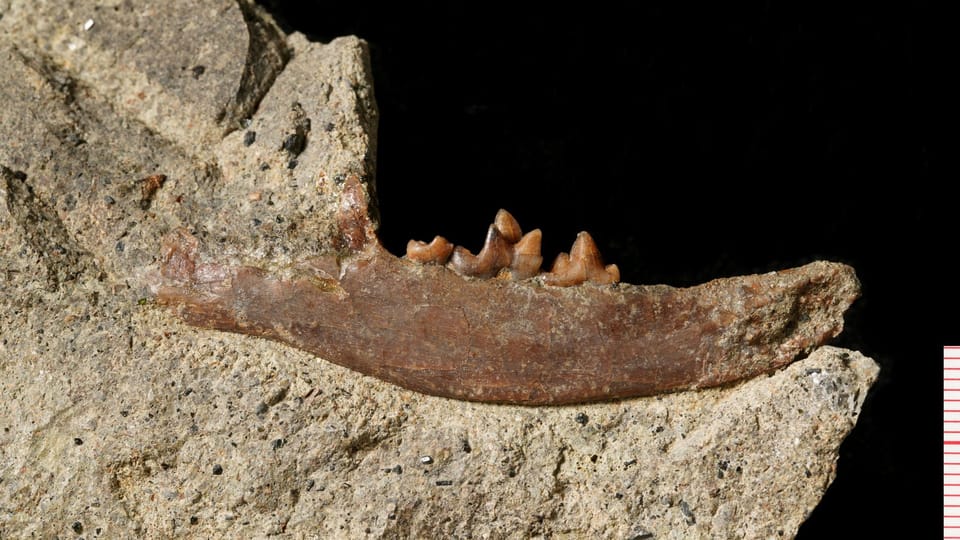
Photo: National Museum
Palaeontologists have discovered that the jaw of a prehistoric animal, found a few years ago near the town of Valeč in the Karlovy Vary region, belongs to a hitherto unknown species of mammal. The unique find is the oldest evidence of a cat-like animal in Europe.
The left lower jaw of the creature was discovered in 2017 during a geological survey by National Museum palaeontologist Boris Ekrt and his colleague Lucia Kunstmülerová from Charles University. On closer examination, it turned out to be a previously unknown species, Fejfarictis valecensis, named after the respected Czech palaeontologist and populariser of the field, Professor Oldřich Fejfar, and the place the fossil was found.
The jaw was found in rock strata dating to the mid-to-late Palaeogene period, i.e. 33 to 34 million years ago – a period from which not many beasts of prey have been found in Europe. Following several years of research by specialists from the Czech National Museum, Charles University’s Faculty of Natural Sciences, the Czech Geological Survey and the French University in Poitiers, the jaw was found to belong to a very early member of the suborder Feliformia, a group of animals consisting of “cat-like” animals, including today’s large and small cats, hyenas, and mongooses.
See the rest here.
Author: Anna Fodor, Source:ČTK

